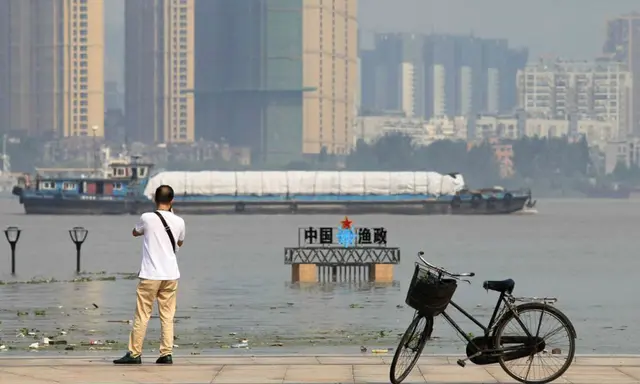The week-long torrential rains have stopped but 60-year-old Wang Caihua still has no idea what to do about his home and small cement products plant in Wuhan – they were submerged by a sudden swell of water on Wednesday night.
“The water must be coming from Tangxun Lake – [the government] might have released some water from the lake to reduce the pressure,” he said, pointing towards a larger lake behind him.
The area near Tangxun Lake, in the southeast of the city, has been hard hit by the floods since water levels on the lake reached “extreme limits”, authorities said.
“The water rose so quickly [on Wednesday night]. I only just had time to escape [from my house] with my wife,” he said.
Wang had rented some land from a local owner four years ago, but learned only later that it had once been used as the site of fish ponds linked to Tangxun Lake.
“Construction waste was dumped into the ponds and they became land. But they’ve now gone back to being underwater,” Wang said.
The fact these former ponds and lakes that were turned into land are now underwater again, following the week-long rain, may be one of the main reasons why urban flooding in Wuhan is only getting worse – despite the 13 billion yuan (HK$15 billion) the government has spent on improving its drainage infrastructure.
Wuhan, once known as “the city of a 100 lakes”, used to have 127 lakes in the city centre alone in the 1980s, but that total fell to about 30 after more than three decades of rapid urbanisation.
Xinhua reported last year that the area covered by the city’s lakes had shrunk from 370 sq km in 1987 to 264 sq km in 2013, according to satellite images, taken during the two years, which were compared by an academic at the China University of Geosciences.
Those vanished lakes now live on in name only – in street names, such as Fruit Lake and Fan Lake. But lost with them has been the city’s ability to catch and store all the rainwater from downpours.
Locals say the lakes that still exist continue to shrink in size due to extensive land reclamation for construction, even though the city passed rules in 2015 to maintain the size of the lakes.
Last year, 39 residents living near Sha Lake filed a lawsuit against the Wuhan Water Bureau for filling up the lake while dredging up silt, according to a report by the Guangzhou-based Southern Weekly. Instead of removing the silt, the bureau simply deposited it in the lake.
Residents complained about the strong smell caused by the silt and in April a local court ordered the water bureau to remove it – a move interpreted by local media as a sign that the city was determined to recognise the importance of the area’s lakes.
Yet on Wednesday, the Wuhan government blamed the city’s low-lying location, poor drainage system and abnormal weather conditions caused by El Niño for the severe floods, without mentioning the shrinking lake.
(SOUTH CHINA MORNING POST)
 简体中文
简体中文

